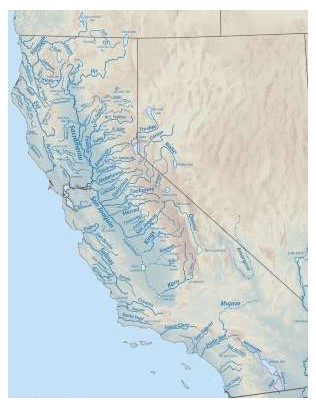
Protecting the coast and ocean can start right outside our doors. Help prevent plastic pollution
and create a healthier neighborhood by engaging in a self-guided cleanup of your local streets,
parks, waterways, and other areas.

About 80 percent of trash found at the beach and entering the Pacific Ocean originates on land, from a wide variety of sources. It can blow or flow down storm drains, creeks, rivers, and other parts of the watershed and end up at the beach. When winter storms come, this trash is swept out to the ocean, becoming marine debris. Cleaning your neighborhood, even if it's far inland, stops trash where it starts before it can pollute the coast and ocean.
Self-guided cleanups provide a flexible opportunity to be part of the statewide cleanup effort at the time and place that is most convenient for you. Your efforts will be counted as part of the statewide cleanup totals if you engage in the collective community science effort by logging all of the trash that you find with the data collection app Cleanswell (available free in your app store) or on a printed paper data card. The amount and type of trash collected is used to inform legislation surrounding plastic pollution and to support policies already in place. Cleanup data have been used to support California's statewide plastic grocery bag ban, Styrofoam food packaging bans in over 80 cities, and new regulations to keep trash out of stormwater systems. To learn more, watch this video from the 2020 California Coastal Cleanup about the importance of data collection.
Thank you for making a difference for your community and the ocean! Show us your cleanup by posting photos on social media using the hashtag #NeighborhoodCleanup. You can also email coast4u@coastal.ca.gov to tell us about your experience and share photos.
Read on for instructions on using the Cleanswell app and tips for staying safe.
Please follow the most recent guidance from the Centers for Disease Control. In addition, the Coastal Commission recommends the following practices for cleaning up litter and other debris:
Preparation:
During your cleanup:
After your cleanup:
By participating in a cleanup you understand and agree that neither the State of California or California Coastal Commission may be held liable or responsible in any way for any injury, death, or other damages to you or your family, heirs, or assigns that may occur as a result of your participation, or as a result of product liability or the negligence, whether passive or active, of any party in connection with the cleanups.